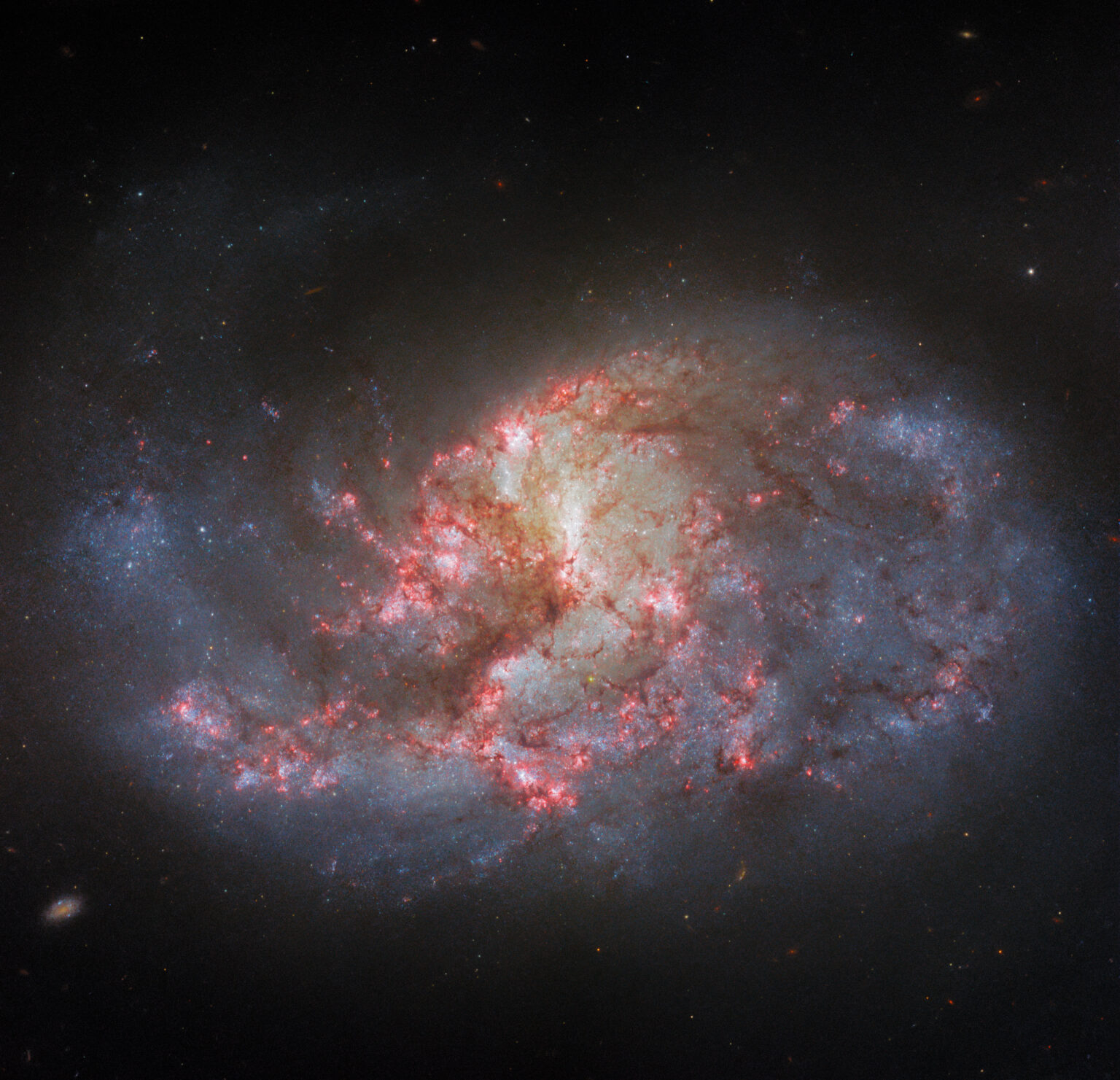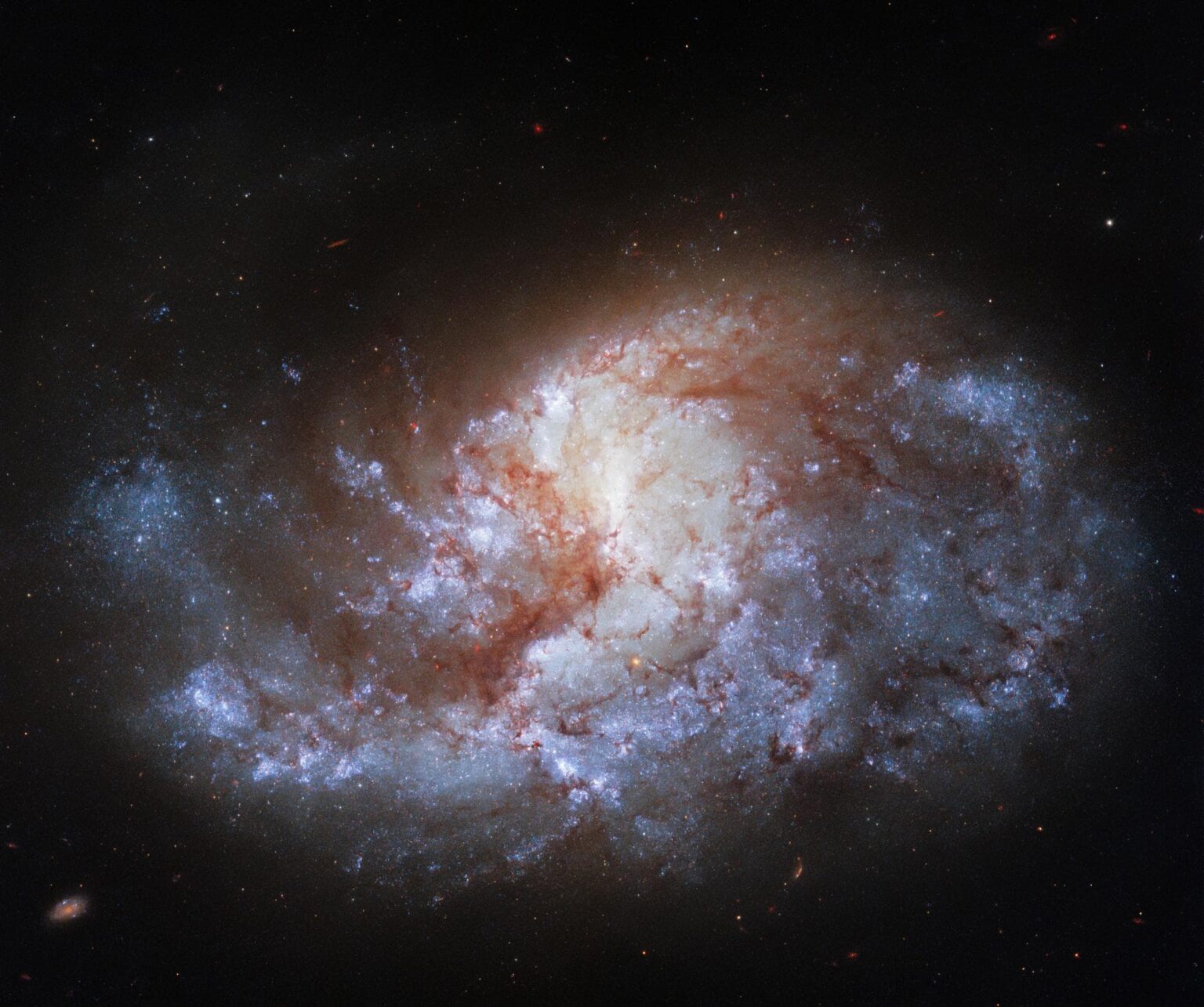The Hubble Mission Support Team has released a new image. This time, the space telescope captured the galaxy NGC 1385.

The galaxy captured in the image is located in the direction of the Fornax constellation at a distance of about 30 million light-years from the Milky Way. Like the Milky Way, NGC 1385 is a barred spiral galaxy. However, it is smaller than our stellar home — the diameter of its disk is 70 thousand light-years. For comparison, the disk diameter of our щит Galaxy is approximately 100-110 thousand light-years.
NGC 1385 is also one of the largest members of the same-name group, which includes about 30 other star systems. It is a part of the Eridanus cluster, which has more than 200 galaxies.
This is not the first time Hubble has observed NGC 1385. The last time it took pictures of it was two years ago. If you compare the two images, you will notice that they are very different. The new image has much more pink and red hues, while the previous one was dominated by cold blue colors.

A previous image of the galaxy NGC 1385 by the Hubble telescope. Source: ESA/Hubble & NASA, R. Chandar, J. Lee and the PHANGS-HST team
This difference is not due to any changes in NGC 1385 itself, but to the camera settings. Hubble instruments are equipped with filters that transmit radiation only at certain wavelengths. Astronomers use them to study specific parts of the electromagnetic spectrum. This can be useful for several reasons. For example, physical processes in certain elements emit light at specific wavelengths, and filters make it possible to collect as much information about them as possible.
In this case, the new Hubble image differs from the previous one by using an additional filter at 657 nm. Astronomers use them to study ionized hydrogen, which is found in gas clouds, among other things.
Based on materials from https://esahubble.org
